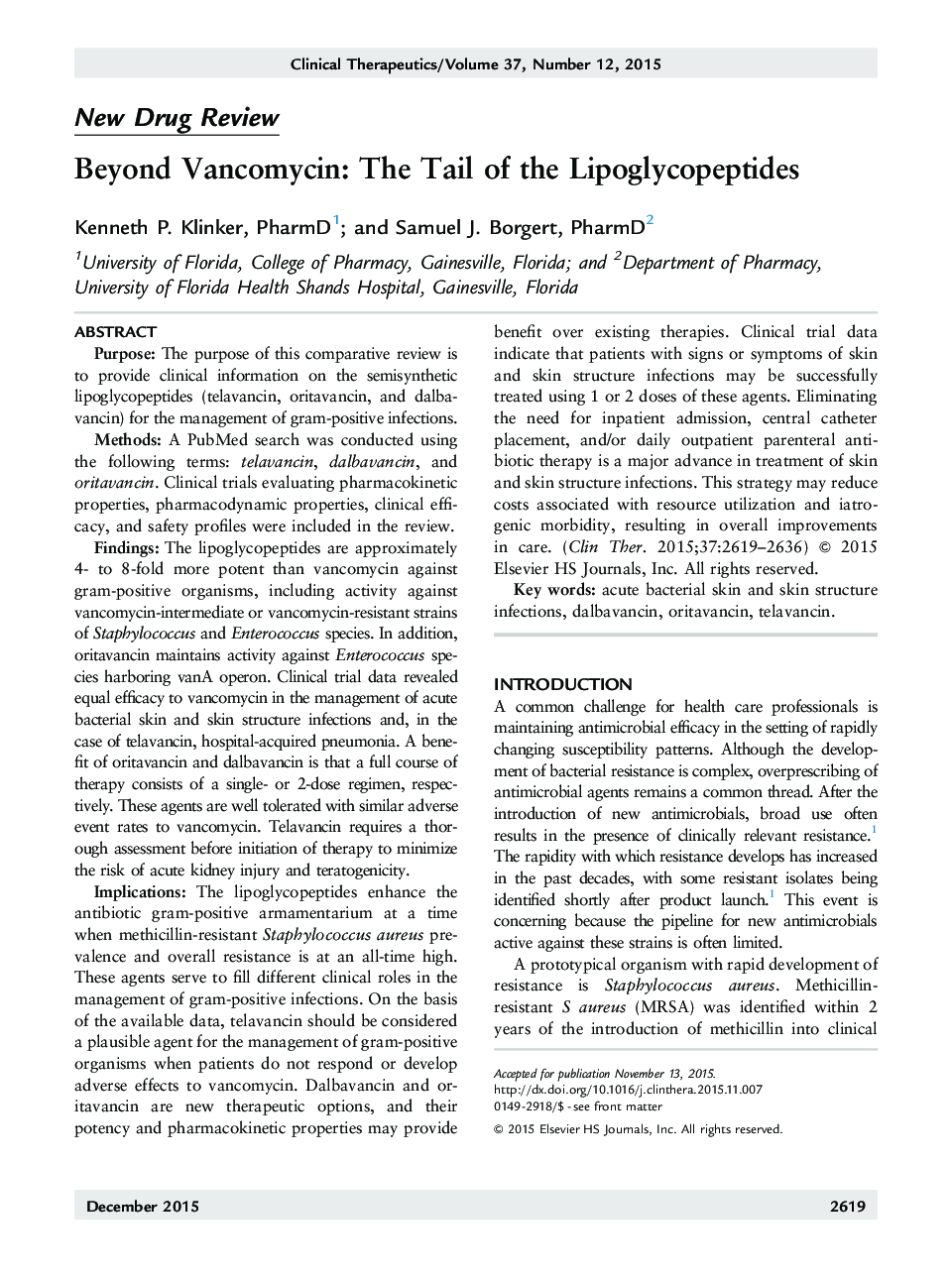| Article ID | Journal | Published Year | Pages | File Type |
|---|---|---|---|---|
| 5824687 | Clinical Therapeutics | 2015 | 18 Pages |
Abstract
The lipoglycopeptides enhance the antibiotic gram-positive armamentarium at a time when methicillin-resistant Staphylococcus aureus prevalence and overall resistance is at an all-time high. These agents serve to fill different clinical roles in the management of gram-positive infections. On the basis of the available data, telavancin should be considered a plausible agent for the management of gram-positive organisms when patients do not respond or develop adverse effects to vancomycin. Dalbavancin and oritavancin are new therapeutic options, and their potency and pharmacokinetic properties may provide benefit over existing therapies. Clinical trial data indicate that patients with signs or symptoms of skin and skin structure infections may be successfully treated using 1 or 2 doses of these agents. Eliminating the need for inpatient admission, central catheter placement, and/or daily outpatient parenteral antibiotic therapy is a major advance in treatment of skin and skin structure infections. This strategy may reduce costs associated with resource utilization and iatrogenic morbidity, resulting in overall improvements in care.
Related Topics
Health Sciences
Medicine and Dentistry
Medicine and Dentistry (General)
Authors
Kenneth P. PharmD, Samuel J. PharmD,
